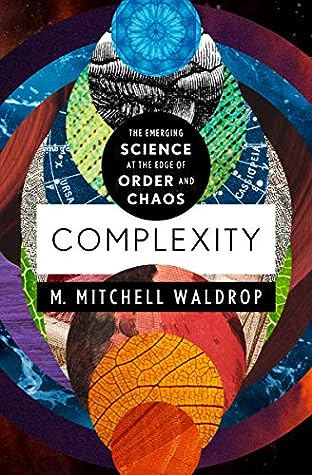More on this book
Community
Kindle Notes & Highlights
Read between
February 26 - February 27, 2020
Instead, all these complex systems have somehow acquired the ability to bring order and chaos into a special kind of balance. This balance point—often called the edge of chaos—is were the components of a system never quite lock into place, and yet never quite dissolve into turbulence, either. The edge of chaos is where life has enough stability to sustain itself and enough creativity to deserve the name of life. The edge of chaos is where new ideas and innovative genotypes are forever nibbling away at the edges of the status quo, and where even the most entrenched old guard will eventually be
...more
Everyone has a research style, says Arthur. If you think of a research problem as being like a medieval walled city, then a lot of people will attack it head on, like a battering ram. They will storm the gates and try to smash through the defenses with sheer intellectual power and brilliance. But Arthur has never felt that the battering ram approach was his strength. “I like to take my time as I think,” he says. “So I just camp outside the city. I wait. And I think. Until one day—maybe after I’ve turned to a completely different problem—the drawbridge comes down and the defenders say, ‘We
...more
High technology could almost be defined as “congealed knowledge,” says Arthur. “The marginal cost is next to zilch, which means that every copy you produce makes the product cheaper and cheaper.” More than that, every copy offers a chance for learning: getting the yield up on microprocessor chips, and so on. So there’s a tremendous reward for increasing production—in short, the system is governed by increasing returns.
“Once you’re in a partnership with biology,” says Cowan, “you give up that elegance, you give up that simplicity. You’re messy.
maw
pout.
Life is an emergent property, the product of DNA molecules and protein molecules and myriad other kinds of molecules, all obeying the laws of chemistry. The mind is an emergent property, the product of several billion neurons obeying the biological laws of the living cell. In fact, as Anderson pointed out in the 1972 paper, you can think of the universe as forming a kind of hierarchy: “At each level of complexity, entirely new properties appear. [And] at each stage, entirely new laws, concepts, and generalizations are necessary, requiring inspiration and creativity to just as great a degree as
...more
exhortation
the number of cell types in an organism did indeed scale roughly as the square root of the number of genes it had.
Emergence First, says Farmer, this putative law would have to give a rigorous account of emergence: What does it really mean to say that the whole is greater than the sum of its parts? “It’s not magic,” he says. “But to us humans, with our crude little human brains, it feels like magic.” Flying boids (and real birds) adapt to the actions of their neighbors, thereby becoming a flock. Organisms cooperate and compete in a dance of coevolution, thereby becoming an exquisitely tuned ecosystem. Atoms search for a minimum energy state by forming chemical bonds with each other, thereby becoming the
...more
antsy,
global sustainability is possible only if human society undergoes at least six fundamental transitions within a very few decades: 1. A demographic transition to a roughly stable world population. 2. A technological transition to a minimal environmental impact per person. 3. An economic transition to a world in which serious attempts are made to charge the real costs of goods and services—including environmental costs—so that there are incentives for the world economy to live off nature’s “income” rather than depleting its “capital.” 4. A social transition to a broader sharing of that income,
...more


